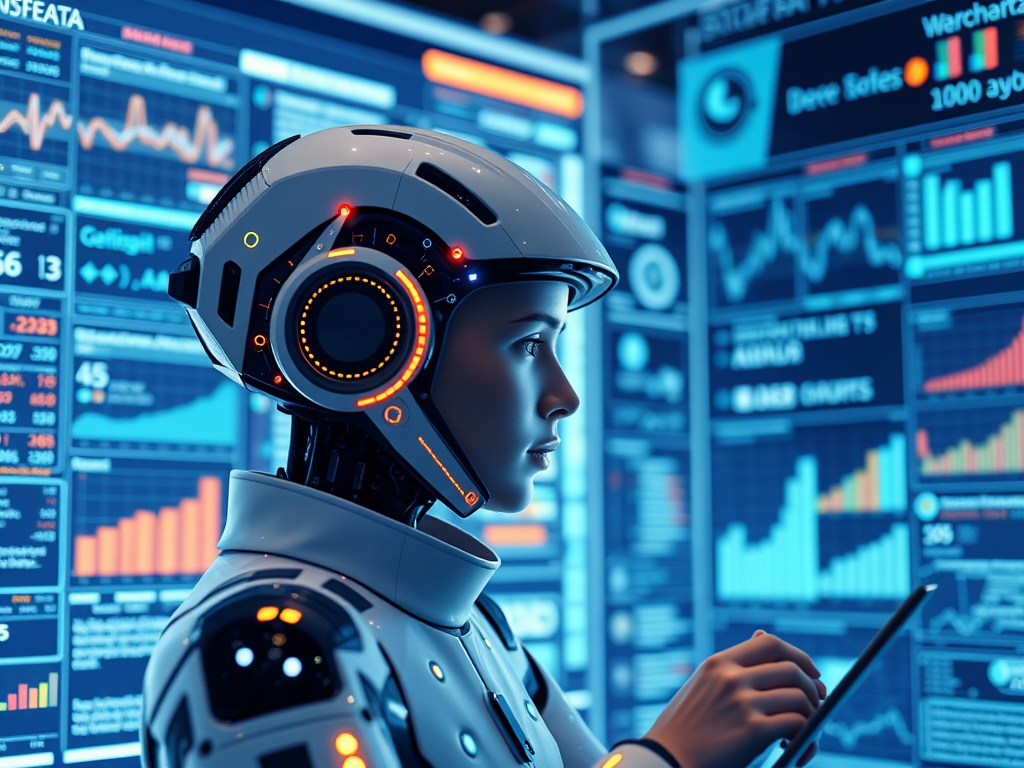OpenAI’s newly launched Deep Research feature for ChatGPT represents a significant leap in AI-assisted analysis, combining advanced web crawling capabilities with sophisticated reasoning to automate complex research tasks. Building on the company’s upcoming o3 model architecture, this tool aims to transform how professionals across industries conduct data-intensive work while intensifying competition in the generative AI landscape.
Core capabilities and technical architecture
Deep Research operates as an autonomous AI agent capable of parsing hundreds of online sources – including text, images, and PDFs – to synthesize analyst-grade reports. Unlike standard ChatGPT interactions, the system employs multi-step reasoning to:
- Formulate research strategies
- Identify and prioritize credible sources
- Cross-validate information across domains
- Adapt search parameters based on emerging findings
The underlying o3 model demonstrates 26.6% accuracy on Humanity’s Last Exam benchmark, showing particular strength in chemistry (+15%), mathematics (+12%), and social sciences (+9%) compared to previous iterations. This performance stems from end-to-end reinforcement learning training on real-world research tasks requiring Python tool integration and browser navigation.
Key technical innovations include:
- Dynamic query refinement through simulated reasoning loops
- Automatic gap analysis in evidentiary support
- Multi-modal data synthesis capabilities
Practical applications and limitations
Early adopters in finance and policy sectors report the tool reduces research time by 60-80% for tasks like:
| Use Case | Traditional Time | Deep Research Time |
|---|---|---|
| Market analysis | 40 hours | 8 hours |
| Product comparisons | 15 hours | 3 hours |
| Regulatory compliance | 25 hours | 5 hours |
However, limitations persist:
- Occasional overconfidence in low-quality sources
- Restricted PDF analysis depth compared to human experts
- Maximum 100 monthly queries for Pro subscribers
OpenAI plans to address these through upcoming updates enabling image embedding (Q2 2025) and custom data source integration (Q3 2025).
Competitive landscape and strategic implications
The release comes amid mounting pressure from Chinese rival DeepSeek, whose R1 model offers comparable performance at 30% lower compute costs. This has triggered rapid innovation cycles, with OpenAI deploying three major upgrades in six weeks:
- o3 Mini – Compact reasoning model
- Operator – Web navigation agent
- Deep Research – Analysis automation
Industry analysts note the strategic timing of Deep Research’s Tokyo unveiling through SoftBank partnerships, signaling OpenAI’s push into Asian markets where DeepSeek gained 42% mobile app share in January. CEO Sam Altman acknowledged the competitive dynamic, stating:
“DeepSeek’s R1 delivers impressive value… We welcome the challenge to push AI capabilities further”.
Future outlook
As AI agents evolve from conversational tools to autonomous research partners, ethical considerations around source verification and algorithmic bias become paramount. OpenAI’s phased rollout – currently limited to Pro subscribers before expanding to enterprise tiers – suggests cautious deployment while refining quality controls.
The broader implications for knowledge work appear transformative, with Gartner predicting 35% of market research roles will integrate AI co-pilots by 2026. However, human oversight remains critical, particularly for high-stakes applications in policymaking and scientific research where Deep Research currently achieves 78% accuracy versus expert analysts.
This development underscores the accelerating arms race in AI capabilities, where success increasingly hinges on balancing technical prowess with real-world usability – a challenge OpenAI aims to meet through tools like Deep Research that augment rather than replace human expertise.


Leave a Reply